Are you worried that your missing Windows Defender history is hiding an infection? Windows Security’s Protection History tracks the Defender’s actions, helping you identify and remove threats easily. But what if your Windows Security Protection History is blank, empty, missing, or not showing? In this article, we look into the possible causes and the steps that can be taken to rectify the problem.
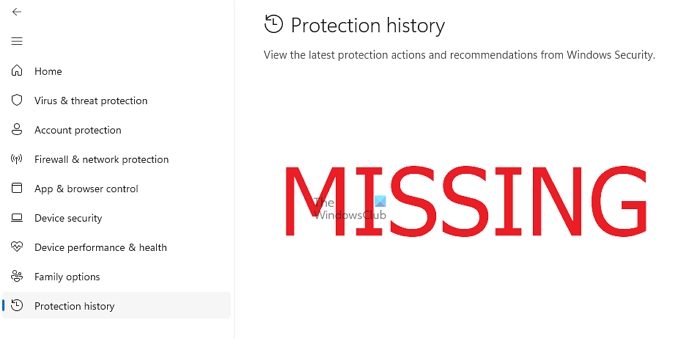
Why is Windows Protection History missing?
If you haven’t recently cleared Windows Defender Protection History but it still shows blank, then the reasons could be:
- History Settings is not enabled: If the history settings are disabled, Microsoft Defender is not configured correctly to record activities like scans, detection, and other associated security-related events, which can lead to the issue.
- Security database corruption: The security database for Microsoft Defender maintains records of all the tasks performed by this application. Hence, a corrupt security database prevents the system from recording and showing the details of the previous events, leading to a missing or blank protection history.
- Problems with the Windows Defender Application: Corrupt application files, conflicts with third-party applications, or improper settings in the Defender application can be responsible for its incorrect functioning. This can also lead to security-related events not being recorded correctly for the said application.
Fix Windows Protection History is blank, missing or not showing
If your Windows Security Protection History is blank, empty, missing, or not showing in Windows 11, follow these methods to fix the issue:
- Delete Defender History Files
- Reset the Microsoft Defender application.
- Run the DISM Tool.
- Check for Third-party software conflicts
You may need Amdin’s permission for most of the solutions
1] Delete Defender History Files
Deleting the Defender history files can effectively resolve the problem by removing all the previous files that may have been corrupted or causing conflicts. To do so,
- Open the Windows Terminal by typing cmd on the Desktop Search Bar.
- Right-click on it and choose Run As Administrator
- On the Terminal prompt type,
del “C:\ProgramData\Microsoft\Windows Defender\Scans\mpcache*” /s > NUL 2>&1
Del: refers to the delete command for removing files.
“C:\ProgramData\Microsoft\Windows Defender\Scans\mpcache*: directs the delete command for erasing files that start with mpcache under the …\Scans directory.
/s : is used to make the delete command recursive, which will delete the specified files not only in the directory mentioned in the command but also those in its subdirectories.
NUL: Similar to the pipe | used in the PowerShell, > acts as a redirector for the output of the del command. NUL ensures that the output messages (in this case, confirmation of the file deletion) are not displayed on the terminal.
2>&1: This is used to suppress the display of any error messages encountered during the deletion process.
- After entering the above command type,
del “C:\ProgramData\Microsoft\Windows Defender\Scans\History\Service\DetectionHistory\*”
followed by,
del “ C: \ ProgramData\ Microsoft\ Windows Defender\ Scans\ mpenginedb.db”
Restart the system once the deletion process completes and check whether the error is occurring.
2] Reset the Windows Defender Application
Resetting Windows Security will restore the default settings for the app, which can help fix issues that have been obstructing its functioning. To reset,
From Start Menu
- Press the Windows + I key to open the Settings option.
- Click on App Settings.
- Look for Windows Security under the list of installed apps.
- Once located, scroll down to look for the Reset option.
- Click on the Reset button to reset the application.
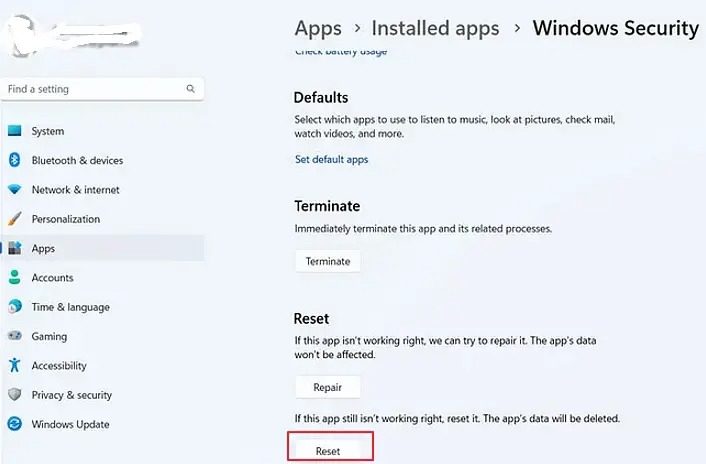
From Windows PowerShell
- Type Windows PowerShell in the Desktop Search Bar.
- Click on Run as Administrator.
- Enter the below-mentioned command on the Terminal Prompt:
Get-AppxPackage Microsoft.SecHealthUI -AllUsers | Reset-AppxPackage
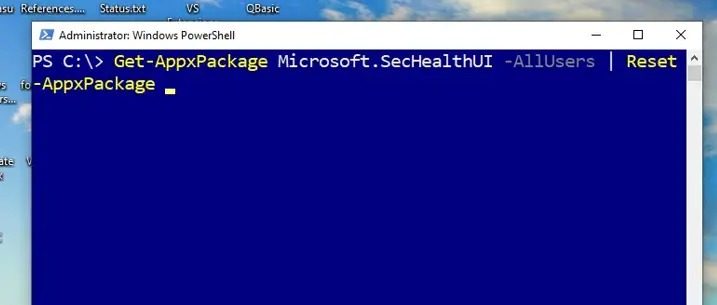
Explanation:
Get-AppxPackage: This is used to retrieve information regarding AppX packages installed. AppX happens to be the app packaging format used by Microsoft in the Microsoft Store apps.
Microsoft.SecHealthUI: is the full name of the Microsoft Security Package.
-AllUsers: option is used to specify the package information to be retrieved for all users in the system.
| (pipeline): helps pass the output of the Get-AppxPackage to the command on the right of the pipeline.
Reset-AppxPackage: Resets the concerned package for all users in the system.
To sum up, the command retrieves Microsoftinformation.SecHealthUI package and resets or reinstalls the same.
- Once the execution of the above command is complete, restart the system.
- Open the PowerShell as Admin once again after reboot.
- Enter the below-mentioned command on the Terminal prompt:
Add-AppxPackage -Register -DisableDevelopmentMode "C:\Windows\SystemApps\Microsoft.Windows.SecHealthUI_cw5n1h2txyewy\AppXManifest.xml"
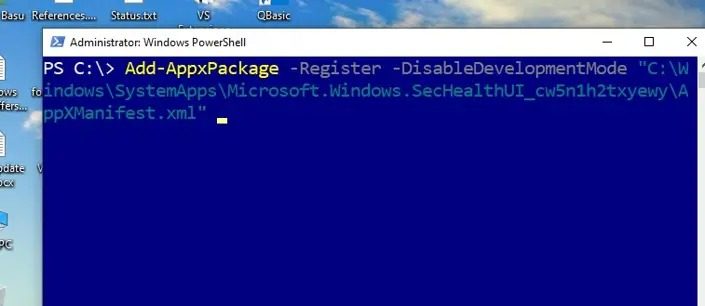
Explanation:
Add-AppxPackage: Adds or installs an AppX package on the system.
-Register: Registers the application after it is installed. The registration process involves adding information about the package to the Windows App repository and making it available.
-DisableDevelopmentMode: Disables the development mode; development mode allows users to open applications with debugging and deployment options, which is unnecessary in this case.
“C:\Windows\SystemApps\Microsoft.Windows.SecHealthUI_cw5n1h2txyewy\AppXManifest.xml”: Mentions the path of the AppXManifest.xml file, which contains the metadata and configuration info for the application, like description and display name for the app.
To sum up, the command registers the Microsoft.SecHealthUI AppX package after repair or reinstallation.
Restart the system once the execution of the above command is complete, and check if the error is happening or not.
3] Run the DISM Tool
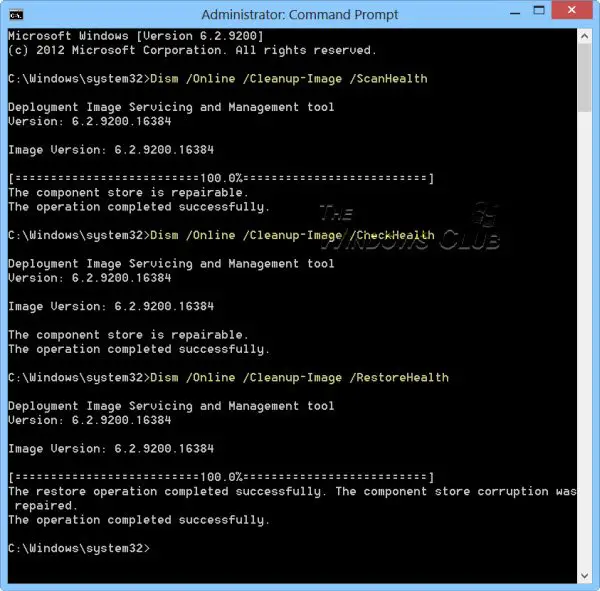
A corrupt system image can also cause a missing protection history. In such cases, running the DISM Tool can help resolve the issue.
4] Check for Third-Party Software conflicts
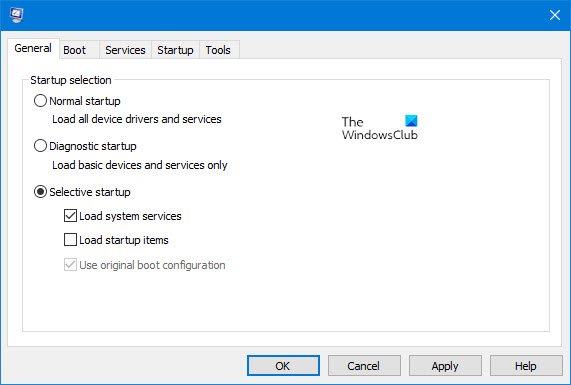
Third-party applications may sometimes cause conflicts with the Microsoft Defender application and restrict its functionality, so the protection history may not appear. In such cases, troubleshooting the issue in Clean Boot State can also help resolve the error.
I hope the post helps to fix the issue.
Read: Windows Defender History Crashes; Can’t Delete detections.log
How long does Windows retain the Protection history details?
Windows generally retain the protection history for a period of 2 weeks, after which they are automatically removed. But you can change the Time to Clear Windows Security Protection History.
What is the difference between RESET and REPAIR options in Windows Defender?
The application data remains unaffected when a REPAIR is undertaken, but with RESET, the app will be reinstalled and reverted to its default settings.
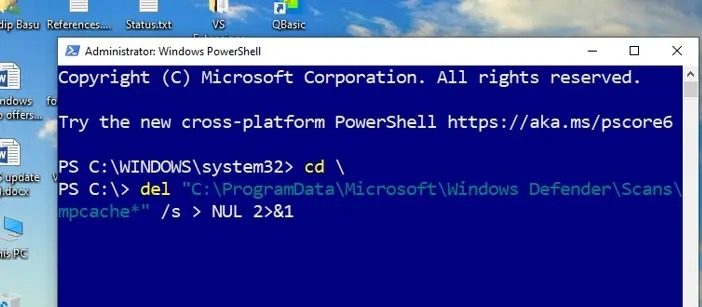
Leave a Reply